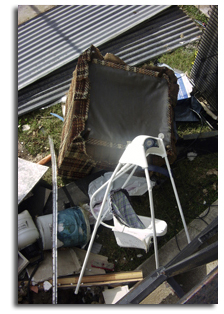Tip #3 - Documenting the Process
You need to keep thorough records to help you survive the settlement of an insurance claim. Because there are three parts to a claim (Structure, Personal Property, & Additional Living Expenses), I have dealt with nine adjusters. The insurance company keeps changing adjusters and the records are not always complete. Many documents which have been faxed or hand-delivered to their office are no where to be found. Verbal expectations were not documented in the log for reference by the the next adjuster. Follow these tips to protect yourself:
- Keep a log in which all telephone, e-mails, meetings, other correspondence are recorded. Include the date, time, and the person with whom you communicated. Write a summary of the topics that were discussed.
- Keep copies of all communications filed in chronological order. Print out all e-mails that are received.
- If documents are delivered in person, have the person receiving them sign a letter (prepared in advance) that contains the contents delivered, the date & time delivered, the name of the person receiving the documents.
- When documents are faxed, ask the adjuster to acknowledged receipt with a phone call or a return letter or fax. Make sure to save the confirmation page that is printed out by most fax machines. If the fax machine does not have this feature, then note the time that that the submission is complete.
 The last year has been a blur. My time has been consumed with traveling, taking care of elderly parents, teaching last spring, and dealing with Hurricane Rita.
The last year has been a blur. My time has been consumed with traveling, taking care of elderly parents, teaching last spring, and dealing with Hurricane Rita.

